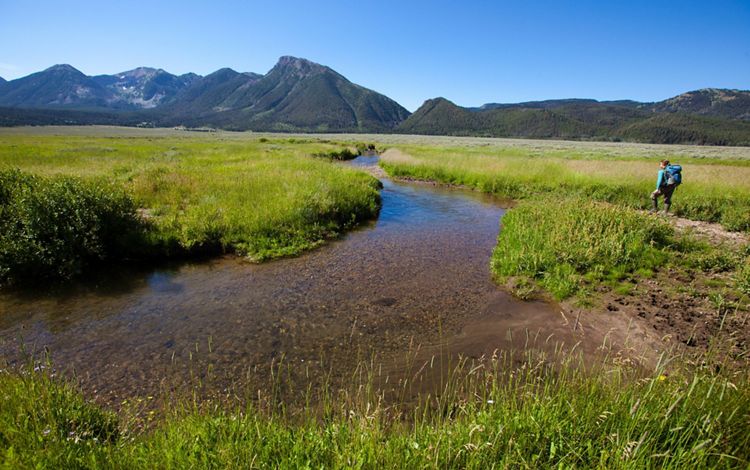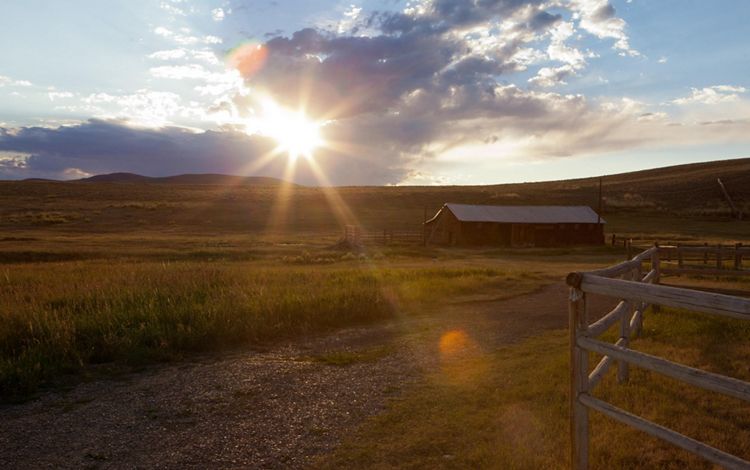The preserve is completely undeveloped and there is no sign to indicate its location. You are welcome to hike the area, but it is best to camp at the nearby Red Rock Lakes National Wildlife Refuge. An all- or four- wheel drive vehicle with good clearance is recommended on North Valley Road, which can be deep sand in spots. It can become very difficult to drive in wet weather.
What to See: Plants
What to See: Animals
Check the weather and road conditions before making a trip. Roads can become impassable after rain and in winter and early spring.
Combine a visit with a trip to Red Rock Lakes National Wildlife Refuge.
Directions
From Interstate 15 take Exit 0 at Monida, Montana (Sign marks turnoff for Red Rock Lakes Wildlife Refuge). Follow signs through Monida (a nearly abandoned town) toward the Red Rock Lakes National Wildlife Refuge and Lakeview. Travel approximately 37 miles east through the Centennial Valley on an improved (partially gravelled) dirt road to Elk Lake Road. Take a left (there is a sign at the junction marking the turnoff to Elk Lake Resort). Follow the road another 3 miles and turn west onto North Valley Road (some maps say North “Side” Road). Once on North Valley Road, you will be travelling through Sandhills habitat for about 14 miles. The first 8 miles are part of the refuge, the next 6-7 miles are the preserve.
From West Yellowstone, follow US 20 for about 14 miles west to just before milepost 398. Turn right onto Red Rock Road (signs mark the turnoff to Lakeview, Red Rock RV Park, and Elk Lake Resort). Follow Red Rock Road about 5 miles to a "T". Take a left (sign identifies this as the direction to Elk Lake Resort). Follow the gravel road up over Red Rock Pass and into the Centennial Valley - you will travel about 11 miles from the "T". Take a right at Elk Lake Road (a sign marks the turnoff for Elk Lake Resort ). Follow the road another 3 miles and turn west onto North Valley Road (some maps say North “Side” Road). Once on North Valley Road, you will be travelling through Sandhills habitat for about 14 miles. The first 8 miles are part of the refuge, the next 6-7 miles are the preserve.
From Reynolds Pass, Montana From the north/Highway 87, follow 87 south into Idaho. Continue 5 miles past the ID-MT state line on Raynolds Pass. Turn south (right) at the Sawtell historical marker (sign also identifies this as the turnoff for Red Rock Lakes National Wildlife Refuge). Follow the paved road around the west shore of Henry's Lake for approximately 5 miles onto Red Rock Pass Road (gravel road). Stay on this road up over Red Rock Pass and into the Centennial Valley - you will travel about 13 miles from the end of the pavement. Take a right at Elk Lake Road (a sign marks the turnoff for Elk Lake Resort ). Follow the road another 3 miles and turn west onto North Valley Road (some maps say North “Side” Road). Once on North Valley Road, you will be travelling through Sandhills habitat for about 14 miles. The first 8 miles are part of the refuge, the next 6-7 miles are the preserve.
_4000x2200.jpg?crop=0%2C0%2C4000%2C2200&wid=1300&hei=715&scl=3.076923076923077)


